
The Enchanting Gokyo Lakes of Nepal
Discover the pristine beauty of Gokyo Lakes in Nepal, a serene and less crowded alternative to the Everest Base Camp trek, offering breathtaking views and rich cultural experiences.
Nestled high in the Himalayas, the Gokyo Lakes are a breathtaking series of turquoise glacial lakes in the Sagarmatha National Park. These lakes sit at an altitude of about 4,700–5,000 meters, making them some of the highest freshwater lakes in the world. The area is renowned for its stunning natural beauty, with views of snow-capped peaks, including the towering Mount Everest, and the serene, crystalline waters of the lakes. The Gokyo Lakes trek is a less crowded alternative to the traditional Everest Base Camp trek, offering a more peaceful and intimate experience with nature. The journey to the lakes takes you through charming Sherpa villages, lush rhododendron forests, and rugged mountain terrain. Along the way, trekkers can explore ancient monasteries, experience the rich culture of the Sherpa people, and witness a diverse array of wildlife, including the elusive snow leopard. One of the highlights of visiting the Gokyo Lakes is the ascent to Gokyo Ri, a nearby peak that offers panoramic views of the entire Everest region. From the summit, you can see four of the world's six highest peaks: Everest, Lhotse, Makalu, and Cho Oyu. The sight of these majestic mountains, combined with the pristine beauty of the Gokyo Lakes, creates an unforgettable experience for any adventurer.
Local tips in Gokyo Lakes
- Acclimatize properly to avoid altitude sickness. Spend at least two nights in Namche Bazaar to adjust.
- Carry enough cash, as there are no ATMs beyond Namche Bazaar.
- Pack warm clothing and a good sleeping bag; temperatures can drop significantly at night.
- Hire a local guide or porter to enrich your experience and support the local economy.
- Travel during the pre-monsoon (March to May) or post-monsoon (September to November) seasons for the best weather conditions.
The Enchanting Gokyo Lakes of Nepal
Nestled high in the Himalayas, the Gokyo Lakes are a breathtaking series of turquoise glacial lakes in the Sagarmatha National Park. These lakes sit at an altitude of about 4,700–5,000 meters, making them some of the highest freshwater lakes in the world. The area is renowned for its stunning natural beauty, with views of snow-capped peaks, including the towering Mount Everest, and the serene, crystalline waters of the lakes. The Gokyo Lakes trek is a less crowded alternative to the traditional Everest Base Camp trek, offering a more peaceful and intimate experience with nature. The journey to the lakes takes you through charming Sherpa villages, lush rhododendron forests, and rugged mountain terrain. Along the way, trekkers can explore ancient monasteries, experience the rich culture of the Sherpa people, and witness a diverse array of wildlife, including the elusive snow leopard. One of the highlights of visiting the Gokyo Lakes is the ascent to Gokyo Ri, a nearby peak that offers panoramic views of the entire Everest region. From the summit, you can see four of the world's six highest peaks: Everest, Lhotse, Makalu, and Cho Oyu. The sight of these majestic mountains, combined with the pristine beauty of the Gokyo Lakes, creates an unforgettable experience for any adventurer.
When is the best time to go to Gokyo Lakes?
Iconic landmarks you can’t miss
Gosainkunda
Explore the breathtaking beauty of Gosainkunda, a sacred lake nestled in the Himalayas, perfect for trekkers and spiritual seekers alike.
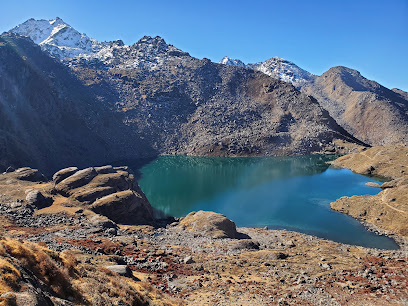
Kala Patthar
Experience the breathtaking views and adventure of Kala Patthar, a pinnacle of beauty in the heart of the Himalayas, perfect for trekkers and nature lovers.
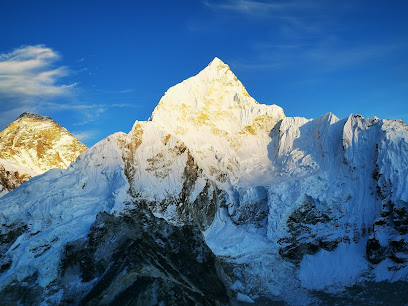
Gokyo Ri
Discover the breathtaking vistas from Gokyo Ri, a majestic peak in Nepal's Everest region, where adventure meets stunning Himalayan beauty.
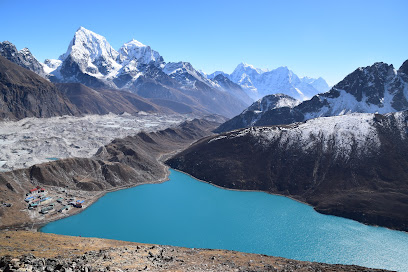
Kangtega
Discover the breathtaking beauty of Kangtega, an iconic mountain peak in the Himalayas, offering stunning views and adventurous trekking experiences.
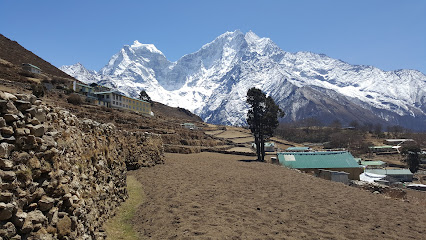
Gorakshep
Explore the captivating beauty of Gorakshep, the serene lake at the foot of Mount Everest, perfect for trekkers and nature lovers.

Renjo La
Experience the breathtaking views and serene beauty of Renjo La, a hidden gem in the heart of the Himalayas, perfect for adventurers and nature lovers.
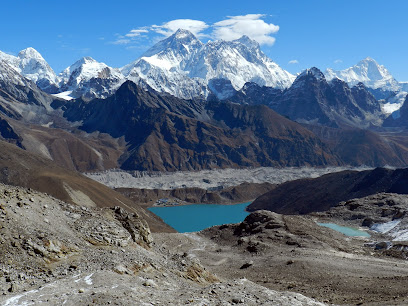
Gokyo Lake
Discover the breathtaking beauty of Gokyo Lake, a serene glacial retreat in the heart of the Himalayas, perfect for nature lovers and trekkers.
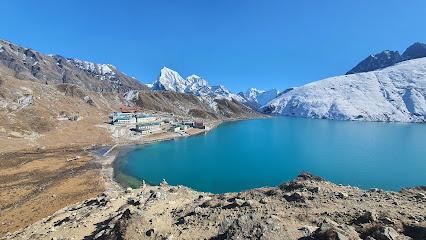
Gokyo Lake - Dudh Pokhari
Discover the breathtaking beauty of Gokyo Lake - Dudh Pokhari, a glacial wonder in the heart of the Himalayas, perfect for trekking and serene escapes.
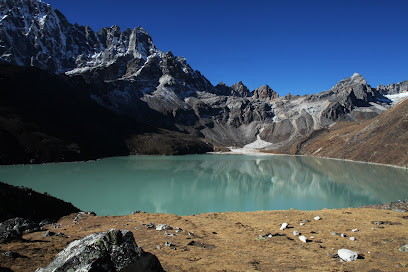
Gokyo Lake Trail
Explore the breathtaking Gokyo Lake Trail in Nepal, where stunning landscapes and serene lakes create an unforgettable trekking experience.
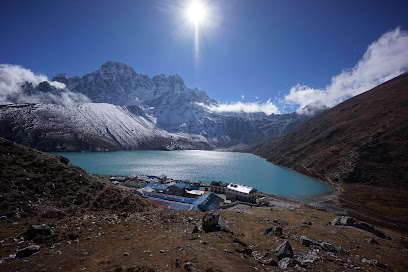
Gokyo Lake V
Experience the breathtaking serenity of Gokyo Lake V, a hidden gem in the Himalayas, perfect for trekking and nature enthusiasts.
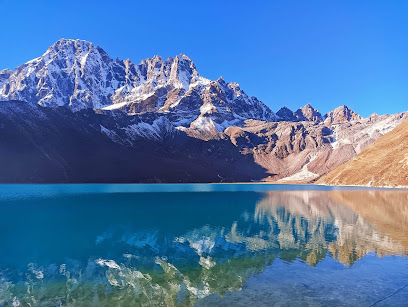
Ngozumpa glacier
Experience the breathtaking beauty of Ngozumpa Glacier, the longest glacier in the Khumbu region of Nepal, a must-visit for nature lovers and adventurers.

Ngozumba Glacier
Discover the breathtaking beauty of Ngozumba Glacier, the longest glacier in Nepal, surrounded by towering peaks and serene landscapes.

Lac Gokyo
Explore Lac Gokyo, a breathtaking glacial lake in the Himalayas, offering stunning views and adventures for trekking enthusiasts and nature lovers.

Unmissable attractions to see
Everest Base Camp
Experience the breathtaking beauty and spiritual journey of Everest Base Camp, a must-visit destination for adventure seekers and nature lovers.
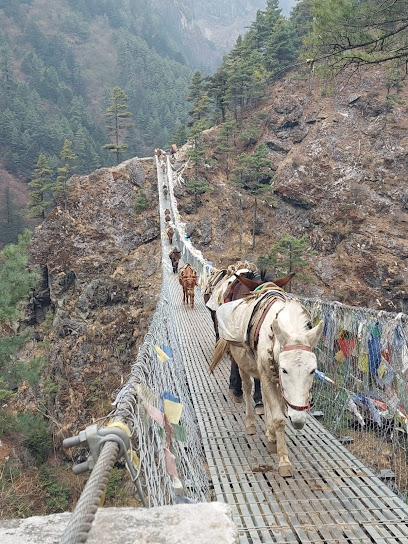
Gorak Shep
Discover the breathtaking beauty of Gorak Shep, a crucial stop for Everest trekkers, surrounded by majestic Himalayan peaks and stunning landscapes.
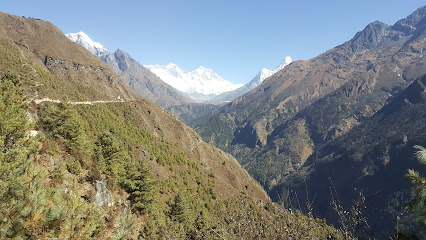
Kala Patthar Summit
Experience the breathtaking views of Mt. Everest from the renowned Kala Patthar Summit, a must-visit for every adventure seeker in Nepal.
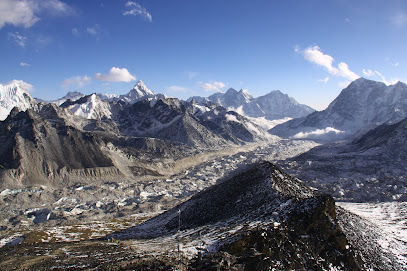
Sagarmatha National Park Museum
Explore the Sagarmatha National Park Museum, where the beauty of the Himalayas meets the rich culture of the Sherpa people.
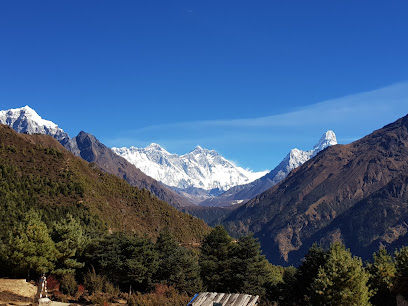
Hillary Bridge
Explore the iconic Hillary Bridge, a breathtaking suspension bridge on the Everest Base Camp trek that offers stunning views of the Himalayas and Sherpa culture.
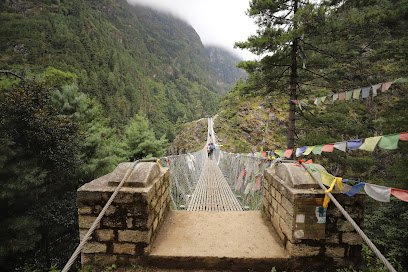
Deboche
Experience the serene beauty and rich culture of Deboche, a hidden gem in the heart of the Himalayas, perfect for trekking and spiritual exploration.
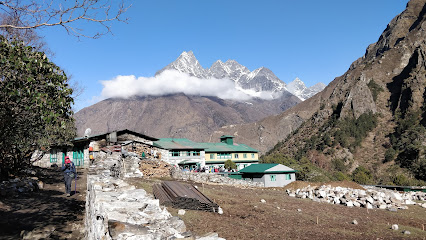
Everest View Point
Experience stunning panoramic views of the Himalayas at Everest View Point, an unforgettable highlight for every traveler in Nepal.
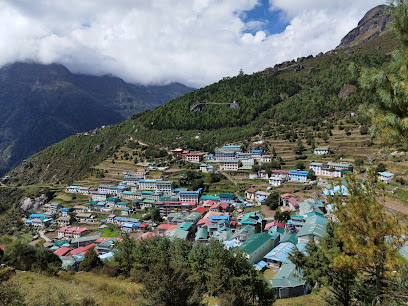
Gokyo Lake
Explore the serene beauty of Gokyo Lake, a breathtaking Himalayan gem surrounded by stunning peaks and vibrant landscapes, perfect for adventurers and nature lovers.
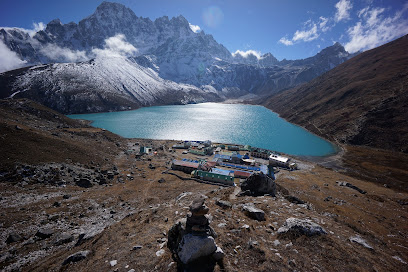
Cheplung Village, Nepal
Explore the serene beauty and rich cultural heritage of Cheplung Village, a hidden gem in the heart of the Himalayas, Nepal.

Everest Base Camp Trek
Experience the breathtaking beauty of the Everest Base Camp Trek, a must-visit for adventure seekers and nature lovers in the heart of the Himalayas.
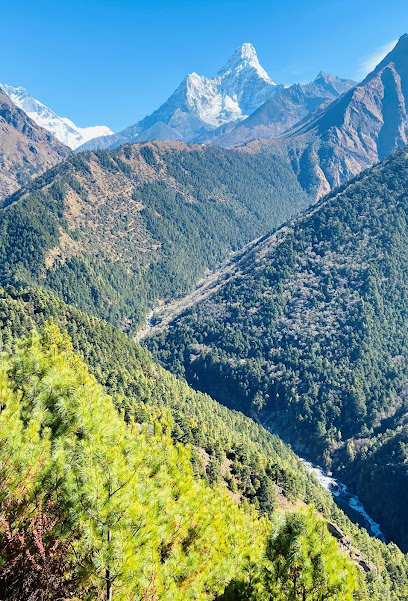
Sherpa Culture Museum
Explore the rich heritage and unique traditions of the Sherpa people at the Sherpa Culture Museum in Namche Bazar, a must-visit cultural experience.
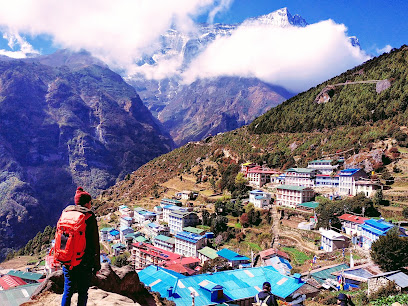
Renjo Pass
Explore the breathtaking Renjo Pass in Nepal, where stunning Himalayan views and rich Sherpa culture await every adventurous traveler.
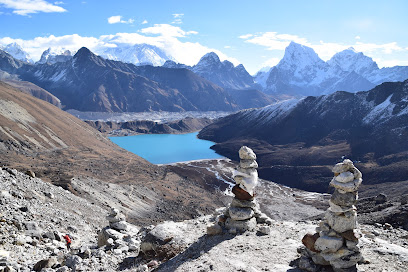
Gokyo Ri Trail
Experience the breathtaking beauty of the Gokyo Ri Trail, a Himalayan trekking paradise with stunning views and rich Sherpa culture.
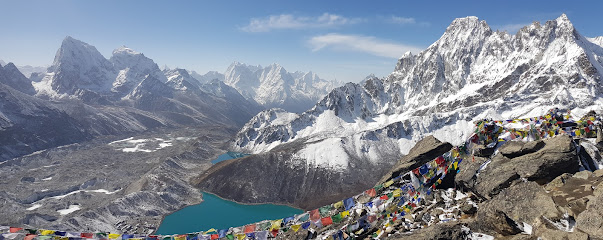
Jata Pokhari
Explore the serene beauty of Jata Pokhari, a tranquil pond surrounded by lush nature, perfect for relaxation and cultural experiences in Nepal.
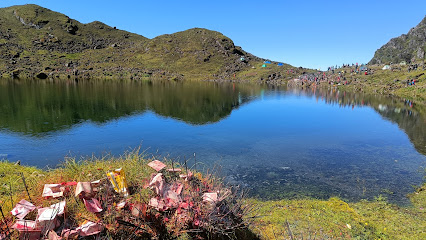
Renjo La
Renjo La: A breathtaking mountain pass in Nepal offering stunning views of the Himalayas, perfect for trekkers and nature lovers seeking adventure.
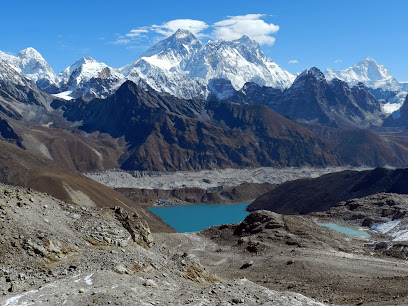
Essential places to dine
Cafe4410
Discover Cafe4410 in Dingboche – your cozy retreat offering delicious meals and stunning mountain views amidst your Himalayan adventure.

Gokyo Namaste Lodge And Restaurant
Discover the enchanting Gokyo Namaste Lodge and Restaurant in Khumjung – where exquisite cuisine meets breathtaking Himalayan views.
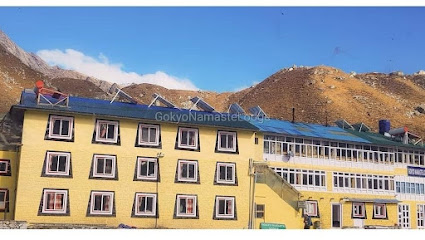
Third Pole Summiter Lodge
Discover traditional Nepalese flavors at Third Pole Summiter Lodge amidst stunning Himalayan views.
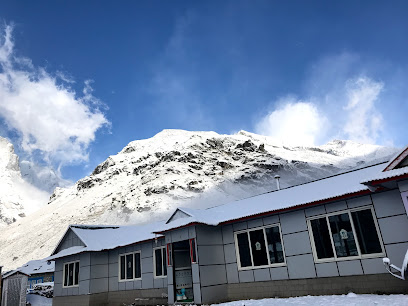
Waterfall View Restaurant
Experience exquisite dining at Waterfall View Restaurant in Lukla with breathtaking waterfall views and delicious local cuisine.
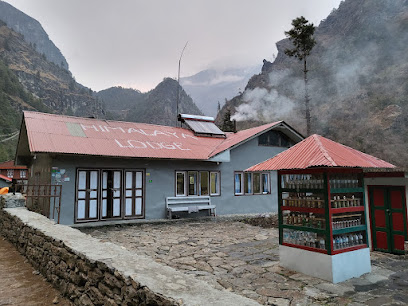
Cho Oyu View Lodge and Restaurant
Discover breathtaking views and delightful cuisine at Cho Oyu View Lodge & Restaurant in Khumjung – your perfect Himalayan retreat.

UMAMI TASTE CONER
Discover authentic Asian flavors at UMAMI TASTE CONER in Namche Bazar—where culinary excellence meets breathtaking Himalayan views.
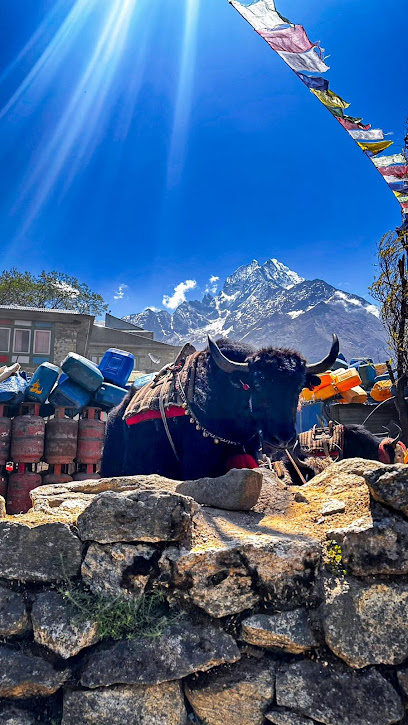
Friendship Lodge Restaurant & Bar
Experience delightful dining at Friendship Lodge Restaurant & Bar in Namche—where stunning views meet delicious cuisine amidst your Everest adventure.
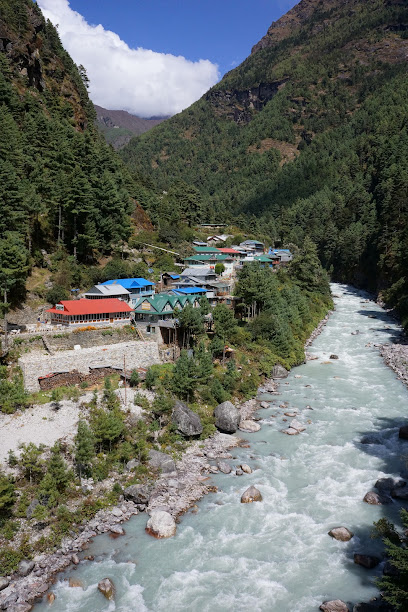
Everest Momo Restaurant
Experience authentic Nepali cuisine at Everest Momo Restaurant in Lukla, where every bite offers a taste of adventure amidst breathtaking Himalayan views.
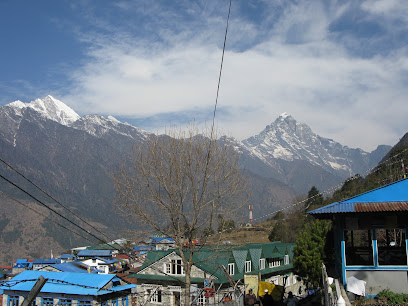
Thagnak Guest House
Experience authentic Nepalese cuisine amidst breathtaking Himalayan views at Thagnak Guest House in Khumjung.
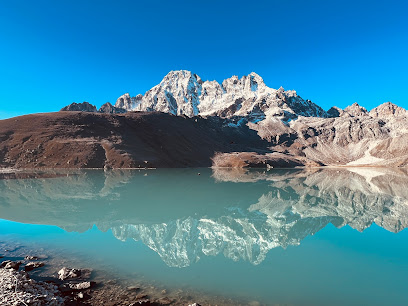
See You Lodge & Restaurant
Discover warm hospitality at See You Lodge & Restaurant in Phakding – your perfect base for Himalayan adventures.
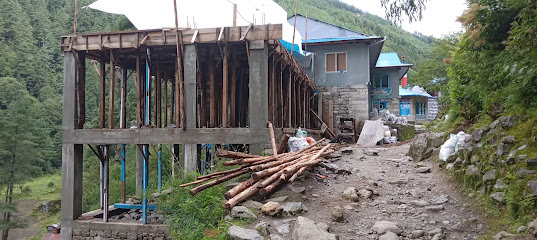
Last restaurant
Experience authentic Nepali cuisine at Last Restaurant while surrounded by the stunning natural beauty of Kathkuiya Forest Trail.
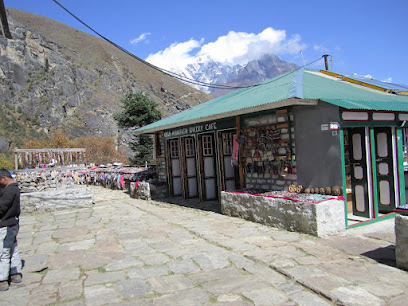
Trekker's Lodge & Restaurant
Discover delectable local cuisine amidst breathtaking mountain views at Trekker's Lodge & Restaurant in Phakding.
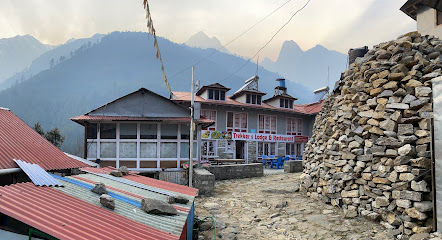
Everest View Lodge
Experience exquisite local cuisine with breathtaking views at Everest View Lodge, your gateway to the majestic Himalayas.

Gokyo Lake Side Lodge and Restaurent
Experience breathtaking views and delicious local cuisine at Gokyo Lake Side Lodge and Restaurant, your perfect retreat in Nepal's Himalayas.

Hidden Village Lodge and Restaurent
Experience authentic Nepali cuisine amidst breathtaking mountain scenery at Hidden Village Lodge and Restaurant in Khumjung.
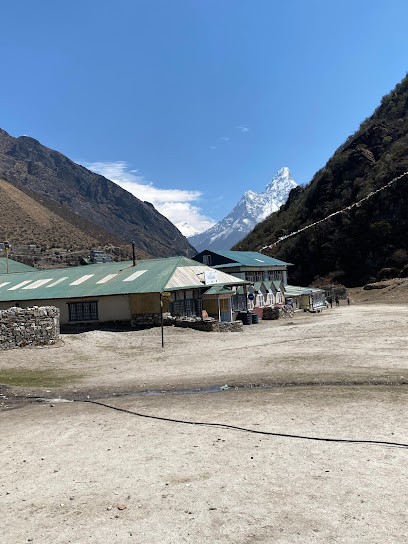
Markets, malls and hidden boutiques
Shona's Alpine
Discover the best outdoor clothing and equipment at Shona's Alpine in Thamel, Kathmandu – perfect for your Himalayan adventures.
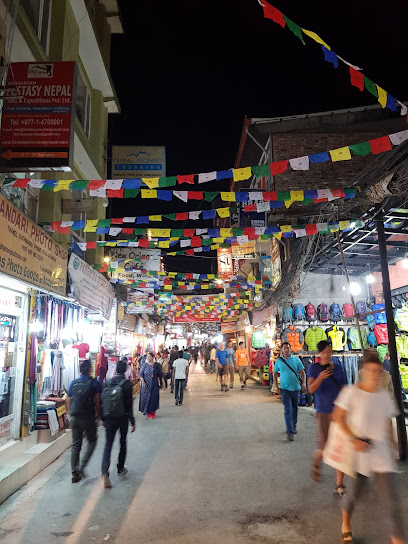
Gokyo Lake
Experience the breathtaking beauty of Gokyo Lake, a serene glacial wonder nestled in the heart of the Nepalese Himalayas, perfect for adventure and tranquility.
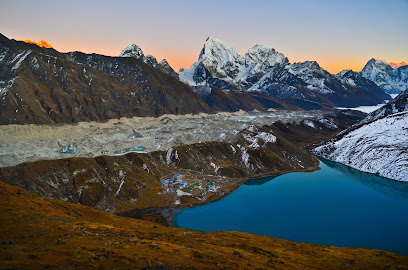
Gokyo Resort
Experience the magic of the Himalayas at Gokyo Resort, your ultimate getaway for adventure and relaxation in Nepal.
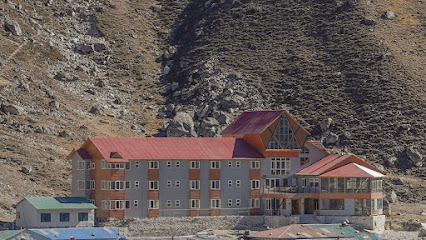
Gokyo Namaste Lodge And Restaurant
Experience the best of local flavors and stunning Himalayan views at Gokyo Namaste Lodge and Restaurant, your perfect retreat in Khumjung.
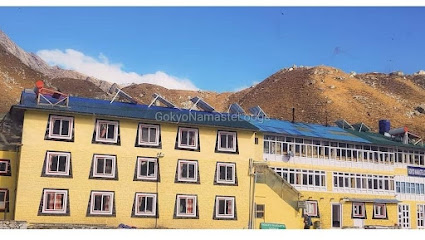
SHERPA ADVENTURE GEAR, NAMCHE
Discover top-quality outdoor gear at Sherpa Adventure Gear, the essential stop for trekkers and climbers in Namche Bazar, Nepal.

Caravan Souvenir Shop
Explore the Caravan Souvenir Shop in Lukla for authentic treasures that capture the spirit of the Everest region, perfect for every traveler.
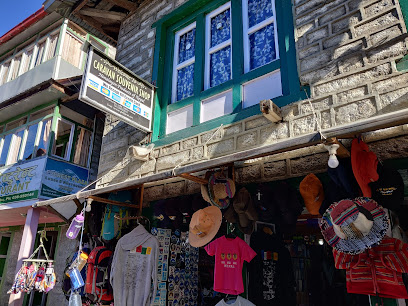
Gokyo Lake Trail
Explore the breathtaking Gokyo Lake Trail, a stunning hiking route in the Himalayas offering mesmerizing views and rich Sherpa culture.
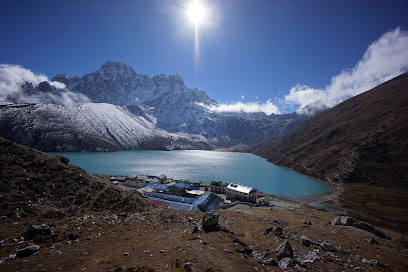
Gokyo Lake V
Discover the breathtaking beauty of Gokyo Lake V, a serene oasis in the heart of the Himalayas, perfect for hiking and nature exploration.
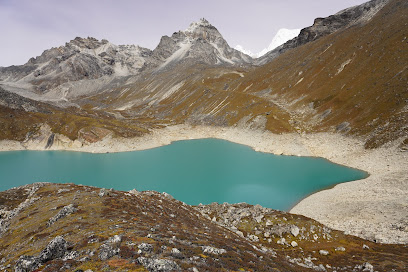
Mountain Sherpa Gear
Discover quality outdoor gear at Mountain Sherpa Gear, your essential stop in Namche Bazaar for trekking the Everest Base Camp.
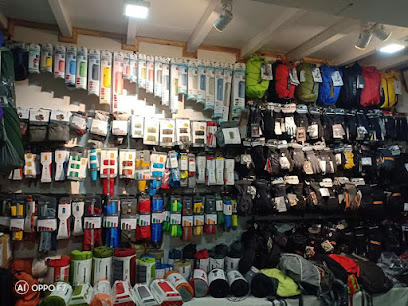
German Bakery at Gokyo 4800m.
Experience the unique charm of the German Bakery at Gokyo, where delicious treats meet breathtaking Himalayan views.
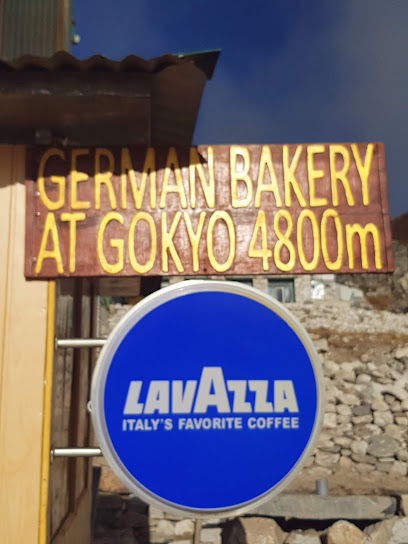
ND Tibetan Cooperative Store
Explore the ND Tibetan Cooperative Store in Namche Bazar for authentic Tibetan crafts and a warm cultural experience.
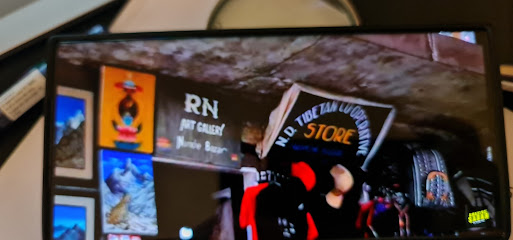
Sonam Gear Namche
Discover authentic Nepali craftsmanship at Sonam Gear Namche, where each piece of clothing tells a unique story of culture and tradition.
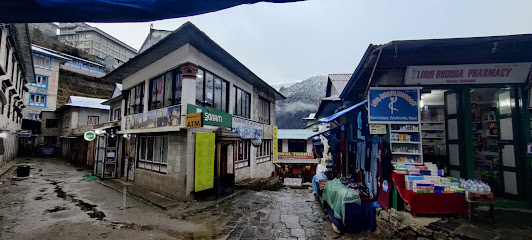
Namche Wool House
Discover the heart of Himalayan craftsmanship at Namche Wool House, your go-to destination for exquisite woolen products in Namche Bazar.
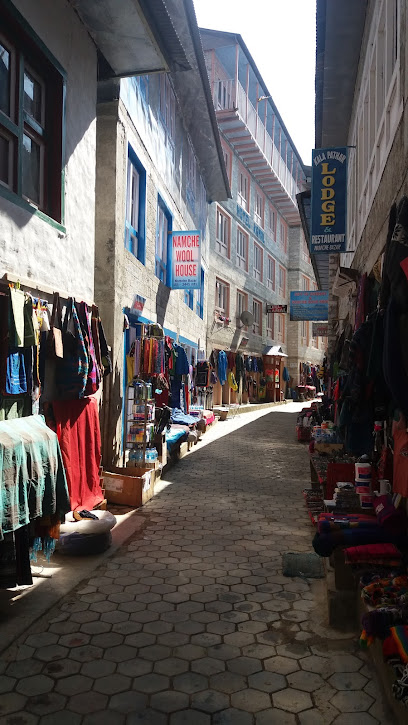
The North face
Visit The North Face in Namche Bazar for high-quality trekking gear and expert advice before your Everest Base Camp adventure.
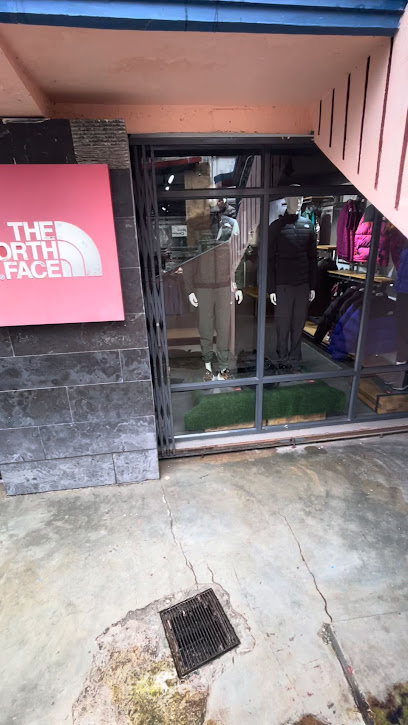
La Sportiva & Salomon Shoes, Black Diamond clothing Store
Discover top-notch outdoor gear at La Sportiva & Salomon Shoes Store in Namche Bazar, your gateway to Himalayan adventures.
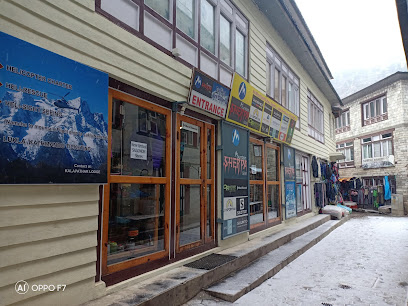
Essential bars & hidden hideouts
Irish Pub
Unwind at the Irish Pub in Namche Bazar, your cozy retreat on the Everest Base Camp trekking route, blending local hospitality with a vibrant atmosphere.
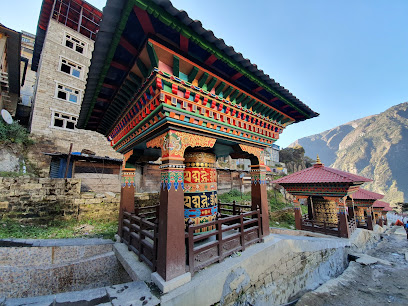
Gokyo Namaste Lodge And Restaurant
Discover the flavors of the Himalayas at Gokyo Namaste Lodge, where comfort meets breathtaking mountain views.
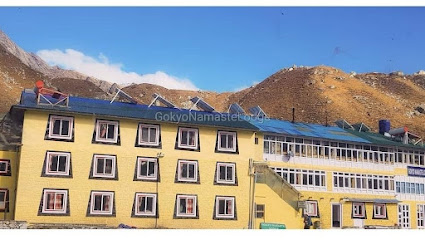
Liquid Bar Namche
Experience the vibrant atmosphere of Liquid Bar in Namche, where adventurers unwind with refreshing drinks and the best music in the Himalayas.
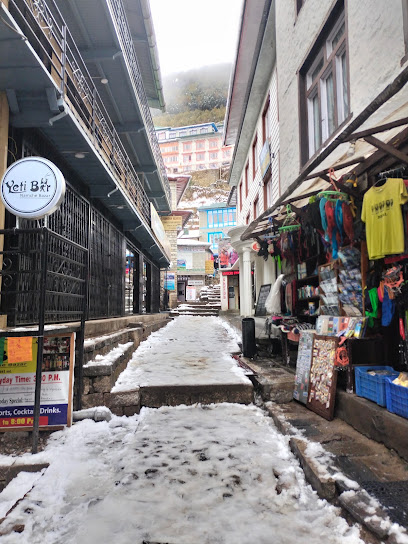
The Irish Pub
Discover The Irish Pub in Lukla - your perfect retreat on the Everest Base Camp Trek, offering delicious meals and a cozy atmosphere amidst breathtaking scenery.
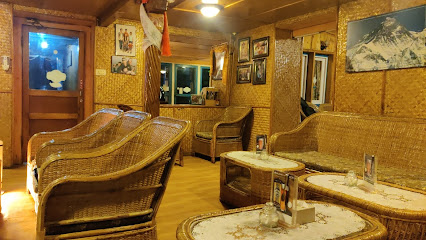
Cafe Danphe Bar
Discover the charm of Cafe Danphe Bar in Namche Bazar, where great drinks, local flavors, and stunning Himalayan views come together.
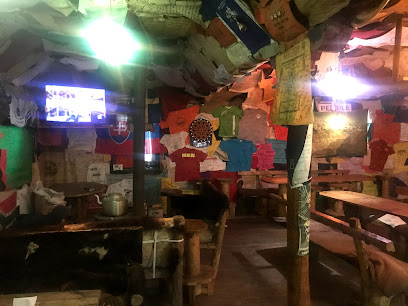
Cho Oyu View Lodge and Restaurant
Experience the breathtaking views and authentic flavors at Cho Oyu View Lodge and Restaurant in the heart of Nepal's Khumbu region.
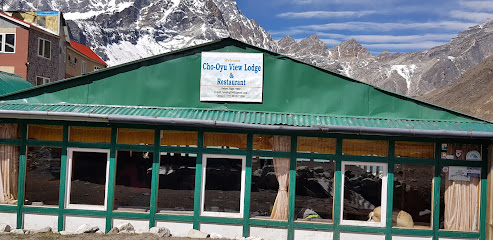
Gokyo Lake Side Lodge and Restaurent
Experience the serene beauty of Gokyo Lake with delicious local cuisine at Gokyo Lake Side Lodge and Restaurant in the heart of the Himalayas.

THE IRISH BAR And Phakding View Point Cafe
Discover the charm of The Irish Bar and Phakding View Point Cafe, where trekkers gather to enjoy breathtaking views and refreshing drinks on the Everest trail.
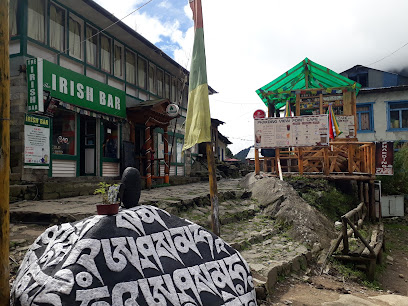
Reggae Bar
Discover the lively Reggae Bar in Benkar, where vibrant music, refreshing drinks, and a warm ambiance create an unforgettable experience.
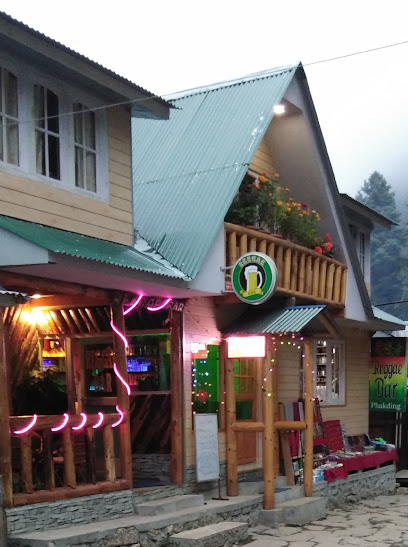
Yeti Bar
Experience the vibrant nightlife at Yeti Bar in Namche Bazar, where adventure meets local culture in a cozy, welcoming atmosphere.
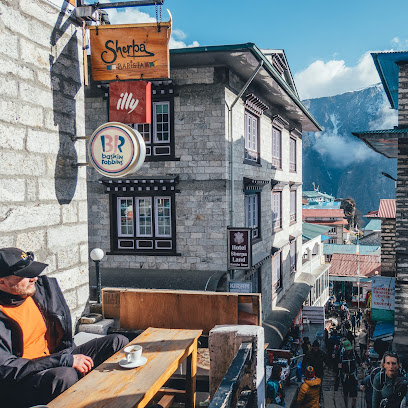
चमेरो गुफा कटेज
Discover tranquility and local culture at Chimero Cave Cottage, a picturesque bar nestled in the serene landscapes of Dolalghat, Nepal.
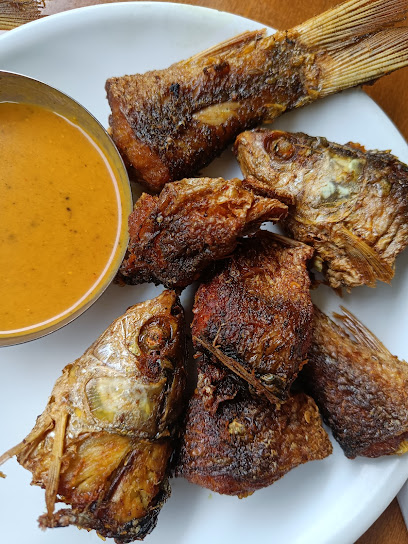
The Local Cheer's & Beer's Pub
Experience warmth and camaraderie at The Local Cheer's & Beer's Pub, your perfect retreat on the Everest Base Camp trek.

Cafe Baggaicha
Discover the charm of Cafe Baggaicha in Bhimeshwor Municipality, where relaxation meets stunning views and delightful refreshments.
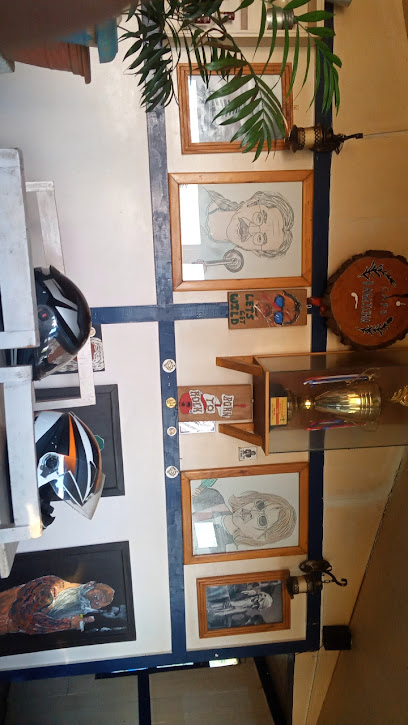
The Waves Pub
Discover the warmth of The Waves Pub, a charming retreat along the Everest Base Camp Trek, where locals and trekkers unite over good food and breathtaking views.

Jyoti logde
Experience the charm of Jyoti Lodge, a tranquil bar in Bhimeshwor, where local culture meets breathtaking Himalayan views.
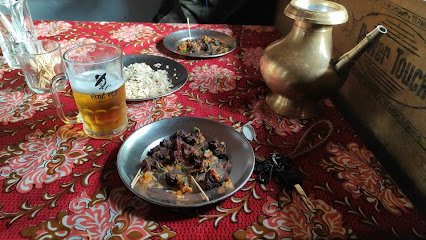
Local Phrases about Gokyo Lakes
-
- Helloनमस्ते
[namaste] - Goodbyeफेरी भेटौं
[feri bhetou] - Yesहो
[ho] - Noहोईन
[hoiin] - Please/You're welcomeकृपया
[krupaya] - Thank youधन्यवाद
[dhanyavad] - Excuse me/Sorryमाफ गर्नुहोस्
[maaf garnuhos] - How are you?तपाइँलाई कस्तो छ?
[tapailai kasto chha?] - Fine. And you?राम्रो, तपाइँलाई?
[ramro, tapailai?] - Do you speak English?तपाइँले अंग्रेजी बोल्नुहुन्छ?
[tapainle angreji bolnuhunchha?] - I don't understandमैले सम्झिन
[maile samjhin]
- Helloनमस्ते
-
- I'd like to see the menu, pleaseकृपया मेनू हेर्न चाहन्छु
[krupaya menu hern chahanchu] - I don't eat meatम भांसामा खान्न छैन
[ma bhasama khann chain] - Cheers!चियर्स!
[chears!] - I would like to pay, pleaseकृपया भुक्तानी गर्न चाहन्छु
[krupaya bhuktani garun chahanchu]
- I'd like to see the menu, pleaseकृपया मेनू हेर्न चाहन्छु
-
- Help!मदद!
[madad!] - Go away!दूर हिड्नुहोस्!
[dur hidnuhos!] - Call the Police!प्रहरीलाई बुलाउनुहोस्!
[praharilai bulaunuhos!] - Call a doctor!डाक्टरलाई बुलाउनुहोस्!
[daktarlai bulaunuhos!] - I'm lostम खोइएको छु
[ma khoieko chu] - I'm illम अस्वस्थ छु
[ma asvasth chu]
- Help!मदद!
-
- I'd like to buy...म किन्न चाहन्छु...
[ma kinn chahanchu...] - I'm just lookingम केवल हेर्न आएको छु
[ma keval hern aeko chu] - How much is it?यो कति हो?
[yo kati ho?] - That's too expensiveयो धेरै महँगो छ
[yo dherai mahango chha] - Can you lower the price?के तपाइले मूल्य हटाउन सक्नुहुन्छ?
[ke tapaile mulya hataun saknuhunchha?]
- I'd like to buy...म किन्न चाहन्छु...
-
- What time is it?कति बजे हो?
[kati baje ho?] - It's one o'clockएक बजे भएको छ
[ek baje bhaeko chha] - Half past (10)दसबजे देखि आधा
[dasbaje dekhi aadha] - Morningबिहान
[bihan] - Afternoonदिउँसो
[diunso] - Eveningसाँझ
[saanjh] - Yesterdayहिजो
[hijo] - Todayआज
[aaj] - Tomorrowभोलि
[bholi] - 1एक
[ek] - 2दुइ
[dui] - 3तीन
[tin] - 4चार
[chaar] - 5पाँच
[paanch] - 6छ
[chha] - 7सात
[saat] - 8आठ
[aath] - 9नौ
[nau] - 10दस
[das]
- What time is it?कति बजे हो?
-
- Where's a/the...?... कहाँ छ?
[... kahan chha?] - What's the address?ठेगाना के हो?
[thegana ke ho?] - Can you show me (on the map)?के तपाइले मलाई देखाउन सक्नुहुन्छ? (नक्सामा)
[ke tapaile malai dekhaun saknuhunchha? (naksama)] - When's the next (bus)?अर्को कति बजे? (बस)
[arko kati baje? (bas)] - A ticket (to ....)एक टिकट (... को लागि)
[ek ticket (... ko lagi)]
- Where's a/the...?... कहाँ छ?
History of Gokyo Lakes
-
The Gokyo Lakes are a series of six glacial lakes located in the Sagarmatha National Park, situated at an altitude of 4,700–5,000 meters. These lakes were formed thousands of years ago during the Pleistocene Epoch, a time when glaciers were more widespread. As the glaciers retreated, they left behind natural basins that filled with meltwater, creating the stunning blue-green lakes we see today.
-
For centuries, the Gokyo Lakes have held great spiritual significance for the local Sherpa people. They are considered sacred and are often associated with the Hindu and Buddhist deities. The lakes are a pilgrimage site, especially during the Janai Purnima festival, when devotees bathe in the sacred waters to cleanse themselves spiritually. The lakes and surrounding area are protected by the Sherpa community, who strive to maintain their pristine condition.
-
The first documented visit by a Western explorer to the Gokyo Lakes region was by Sir Edmund Hillary and Tenzing Norgay during their 1953 expedition to Mount Everest. While their primary objective was to summit Everest, their journey brought international attention to the entire Khumbu region, including the Gokyo Lakes. This exploration opened the doors for future trekking and mountaineering expeditions, making the area a popular destination for adventurers.
-
In 1979, the Sagarmatha National Park, which includes the Gokyo Lakes, was designated a UNESCO World Heritage Site. This recognition was due to the park's unique natural beauty, diverse ecosystems, and cultural significance. The designation has helped to promote conservation efforts and sustainable tourism in the region, ensuring that the natural and cultural heritage of the Gokyo Lakes is preserved for future generations.
-
Over the past few decades, the Gokyo Lakes have become a popular trekking destination for adventurers from around the world. The Gokyo Ri trek, which offers panoramic views of Everest, Lhotse, Makalu, and Cho Oyu, is one of the most sought-after routes. The increasing popularity of trekking has brought economic benefits to the local Sherpa community, although it has also presented challenges in terms of managing environmental impact and ensuring sustainable tourism practices.
-
The Gokyo Lakes are not only culturally significant but also ecologically important. They are part of a high-altitude wetland ecosystem that supports a variety of plant and animal species, including some that are endemic to the region. The lakes are also a critical water source, feeding into the Dudh Koshi River, which is vital for the communities downstream. Efforts to study and preserve the unique biodiversity of the Gokyo Lakes are ongoing, highlighting the need for balanced conservation and tourism.
Gokyo Lakes Essentials
-
Gokyo Lakes is located in the Solukhumbu District of Nepal. The nearest international airport is Tribhuvan International Airport in Kathmandu. From Kathmandu, you can take a domestic flight to Lukla, which is the nearest airport to Gokyo Lakes. The flight takes about 30-45 minutes. From Lukla, you will need to trek to Gokyo Lakes, which generally takes about 5-7 days depending on your pace and acclimatization needs.
-
Once you arrive in Lukla, the primary mode of transportation to Gokyo Lakes is trekking. There are no roads or vehicle access, so be prepared for a challenging but rewarding hike. Porters and yaks are available for hire to carry your luggage. Helicopter services are also available from Kathmandu to Lukla and can sometimes be arranged directly to Gokyo Lakes for an additional cost.
-
The official currency in Nepal is the Nepalese Rupee (NPR). While trekking in the Gokyo region, it is essential to carry enough cash as ATMs are scarce and unreliable. Major hotels and some lodges might accept credit cards in Kathmandu and Lukla, but cash is the preferred and often only method of payment in the mountains. It’s advisable to withdraw sufficient cash in Kathmandu before starting your trek.
-
Gokyo Lakes is generally safe for tourists, but standard precautions should be taken. Petty theft can occur, so keep your belongings secure. Altitude sickness is a significant concern; ensure you acclimatize properly and stay hydrated. There are no specific high-crime areas targeting tourists, but always stay vigilant and aware of your surroundings, especially in crowded areas like Lukla.
-
In case of emergency, the nearest medical facilities are in Lukla. For serious medical issues, evacuation by helicopter to Kathmandu may be necessary. It is highly recommended to have travel insurance that covers high-altitude trekking and emergency evacuation. The emergency contact number in Nepal is 112. Additionally, inform your trekking guide or lodge owner immediately if you feel unwell.
-
Fashion: Do dress in layers and wear appropriate trekking gear. Avoid overly revealing clothing. Religion: Do respect local customs and traditions. Always ask for permission before taking photographs of people or religious sites. Public Transport: Do be prepared for delays and cancellations, especially with flights to and from Lukla. Greetings: Do greet people with 'Namaste' and a slight bow of the head. Eating & Drinking: Do try local foods like Dal Bhat and Momos. Don't waste food, as resources are scarce in the mountains.
-
To experience Gokyo Lakes like a local, engage with the Sherpa community and participate in local traditions. Visit the monasteries and attend a prayer session if possible. Early morning hikes to viewpoints like Gokyo Ri offer stunning views of Everest and surrounding peaks. Stay in locally-owned lodges and try traditional Sherpa dishes for an authentic experience.
Nearby Cities to Gokyo Lakes
-
Things To Do in Nagarkot
-
Things To Do in Bhaktapur
-
Things To Do in Kathmandu
-
Things To Do in Patan
-
Things To Do in Darjeeling
-
Things To Do in Gorkha
-
Things To Do in Gangtok
-
Things To Do in Siliguri
-
Things To Do in Bandipur
-
Things To Do in Chitwan
-
Things To Do in Pokhara
-
Things To Do in Paro
-
Things To Do in Phuentsholing
-
Things To Do in Thimphu
-
Things To Do in Patna









